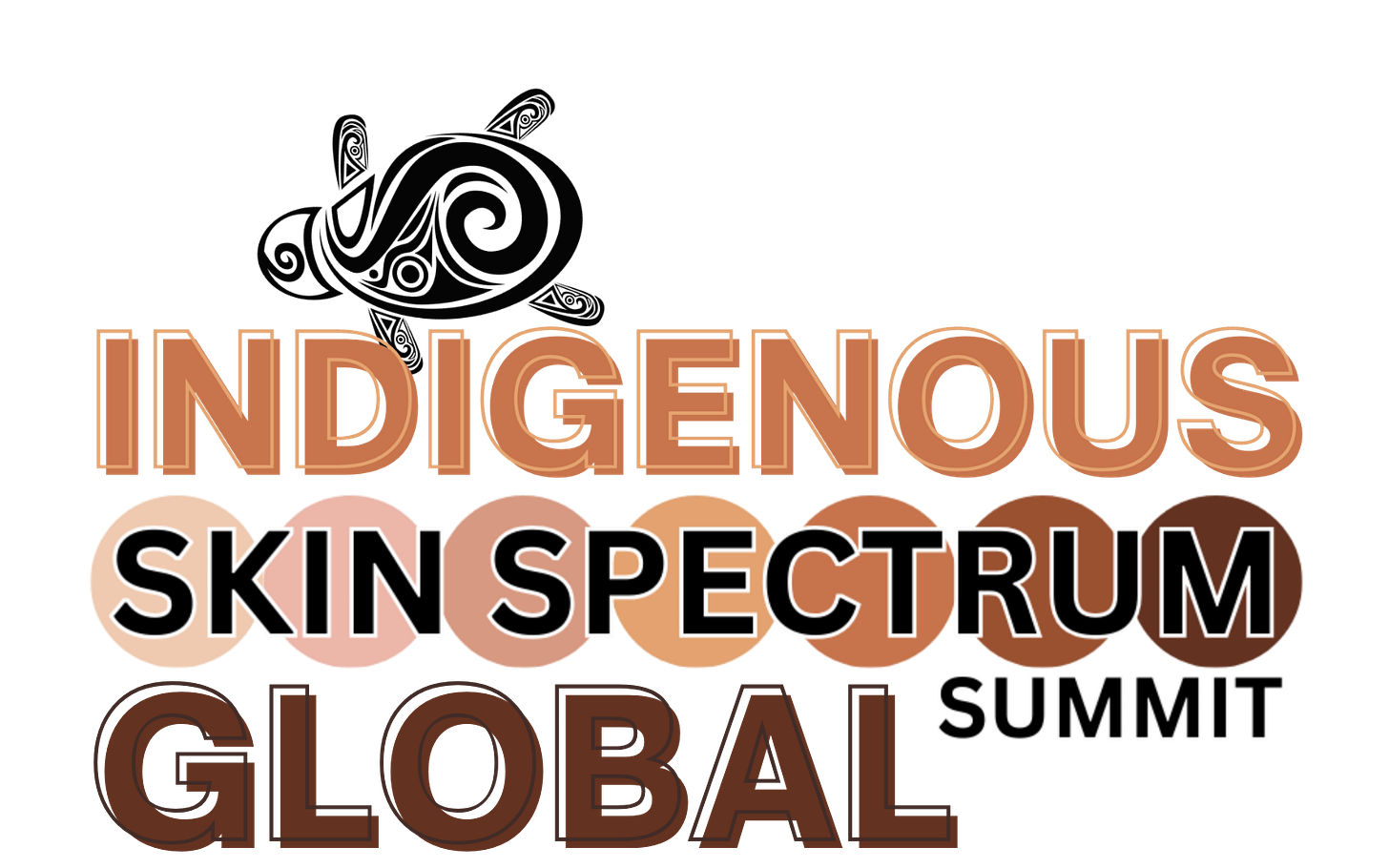Indigenous AD patients identify barriers to care
Costs, inadequate housing, travel distances, and social stigma all barriers to good treatment outcomes in Canada’s Indigenous population (Issue #236, 1,600 words, 8 minutes)
Atopic dermatitis (AD) has significant economic, physical, mental, emotional, and spiritual impacts on Indigenous populations, Dr. Nickoo Merati said during a presentation at the 10th annual Skin Spectrum Summit on Oct. 5, 2024, in Toronto. However, there is a lack of information on AD in those populations, as well as a lack of Indigenous participation in the healthcare system.
Dr. Merati is a dermatology resident at McGill University in Montreal. She focuses on eczema in Indigenous peoples in Canada and is committed to enhancing Indigenous engagement in medical and dermatologic research.
Dr. Merati was presenting on a project examining atopic dermatitis (AD) in Indigenous communities. The research was supported by the Canadian Skin of Colour & Diversity Scholarship, an initiative that Pfizer Canada and Chronicle Companies started in 2023. The Scholarship aims to improve dermatologic care for underrepresented populations, including those with deeper skin tones, Indigenous Peoples, and other racialized individuals. Dr. Merati was one of two winners of the inaugural Scholarship, alongside Dr. Muskaan Sachdeva from the University of Toronto.
She noted Indigenous communities have raised concerns about AD management, and Indigenous voices are absent in AD literature and medical literature in general.
Dr. Merati said this project used a community-based participatory research approach. The research team included an Indigenous dermatologist lead, an Indigenous outreach coordinator, an outreach nurse, a traditional knowledge keeper Elder, and a rural Saskatchewan-based medical student. The project's first phase used an exploratory sequential mixed methods design with qualitative focus groups. An ongoing second phase involves quantitative questionnaires.
Dr. Merati said the study examined how AD affected patients and caregivers according to the four aspects of the Indigenous medicine wheel understanding of health: physical, emotional, mental, and spiritual.
Dr. Merati said that preliminary results have highlighted many physical barriers to care, especially financial ones.
Some barriers identified included:
Cost of products, including over-the-counter options
Housing overcrowding and mould
The cost of replacing clothing with natural fibres and damage to those clothes from topical agents
Travel distance to appointments
Lack of personal vehicles
Rural roads are often hazardous in poor weather conditions
Many patients cited depression as a significant emotional effect of AD, said Dr. Merati. One patient said they still find it painful to remember how scared their daughter was of her facial appearance due to AD. The emotional impact is also felt by caregivers, especially those with small children with AD.
Participants cited loss of sleep due to AD—both in patients and caregivers—as a significant mental impact of eczema, said Dr. Merati.
Patients with AD also experience bullying, and many participants said they experienced racism from the healthcare system when being treated for AD, said Dr. Merati.
When the quantitative and qualitative data is finalized, Dr. Merati said it will be returned to the Indigenous community as the original owners of the knowledge. The study aims to inform and improve local health policies, enhance trust in local research processes, and promote health equity and better health outcomes for Indigenous populations globally.
Bottom Line: To address the limited knowledge and literature on AD in Indigenous communities, a recent study examined the impacts of the condition on these communities physically, emotionally, mentally, and spiritually. Indigenous patients with AD and their caregivers experience numerous barriers to care, including expenses, poor access to suitable housing, physical distance from care, depression, loss of sleep, bullying, and racism from the healthcare system.
From the literature on atopic dermatitis in skin of colour
Frequent intake of high fibre and probiotic diets lowers risks associated with atopic dermatitis and house dust mite allergy: A cross-sequential study of young Chinese adults from Singapore and Malaysia
In this cross-sequential study, researchers investigated the association between dietary fibre intake and various characteristics of atopic dermatitis (AD), including house dust mites (HDM) allergy and dry skin. They assessed data on 13,561 young Chinese adults (mean age 22.51 years, standard deviation[SD]±5.90) from Singapore and Malaysia.
Investigators assessed the participants’ dietary habits using a validated semi-quantitative, investigator-administered food frequency questionnaire from the International Study of Asthma and Allergies in Childhood. The researchers derived an amount-based dietary index to estimate fibre intake while studying its correlation with probiotic drink intake. They determined AD status by skin prick tests for HDM and symptomatic histories of eczema.
Results showed high fibre intake (approximately 98.25 g/serving/week) significantly lowered the associated risks for HDM allergy (Adjusted Odds Ratio [AOR]: 0.895; 95% Confidence Intervals [CI]: 0.810-0.989; adjusted p-value<0.05) and AD (AOR: 0.831; 95% CI: 0.717-0.963; adjusted p-value<0.05), but not dry skin. While probiotic intake was not associated with AD, it was significantly correlated with fibre intake (R2=0.324, p-value<0.0001). Among those frequently consuming probiotics, moderate fibre intake sufficiently lowered the AD risk (AOR: 0.717; 95% CI: 0.584-0.881; adjusted p-value<0.01). Moreover, a fibre-rich diet independently mitigated risks associated with high intake of fats, saturated fats, and protein.
Dupilumab treatment improves lichenification in atopic dermatitis in different age and racial groups
Investigators assessed the impact of dupilumab compared to placebo in atopic dermatitis (AD) lichenification by age and race-defined groups.
For this post-hoc analysis, the researchers included pooled data from five clinical trials of dupilumab: NCT03054428, NCT03345914, NCT02277743, NCT02277769, NCT02395133. This totalled 1,997 patients aged six to 88 years of all races with moderate to severe AD. These records were separately randomized and analyzed by age and self-reported racial background. The racial group included 132 Asian, 74 Black or African American, and 427 White patients. The group analyzed by age included 123 children, 85 adolescents, and 460 adults.
Researchers found dupilumab treatment resulted in nominally significant reductions compared to placebo in Global Individual Signs Score lichenification from week one (adults/adolescents) or week two (children) through week 16. Lichenification measured by SCORing Atopic Dermatitis and Eczema Area and Severity Index improved similarly. By week 16, dupilumab significantly improved lichenification, with nominal significance vs placebo across all racial groups.
The authors conclude that dupilumab treatment resulted in rapid and sustained improvement in lichenification across anatomic regions in all ages. Lichenification improved to a similar extent across racial groups.
Skin health of Aboriginal children living in urban communities
Researchers in Western Australia examined clinic and patient data from newly established pediatric dermatology clinics at two urban Aboriginal Community Controlled Health Organisations (ACCHOs), including disease frequencies and associations, to inform dermatology service provision and advocacy.
Investigators collected data from 32 clinics over 19 months, with 335 episodes of care and a mean attendance rate of 74%. From 78 new patients, the researchers recruited 72 (92%) into the study, only one of whom had previously received a dermatologist assessment.
Atopic dermatitis, tinea, or acne accounted for 47% (34/72) of referrals, and 60% of patients received their first appointment within four weeks of referral. The GP referral and dermatologist diagnosis concurred in 47/72 (65%) consultations. The most frequent diagnoses (primary or secondary) at first consultation were atopic dermatitis (26%, 19/72), dermatophyte infections (25%, 18/72), acne (21%, 15/72), bacterial skin infections (18%, 13/72), and post-inflammatory dyspigmentation (18%, 13/72). Three categories of the 2022 Australasian College of Dermatologists curriculum (infections, eczema/dermatitis, pigmentary disorders) accounted for 59% of all diagnoses.
VIDEO: Dermoscopy of Skin of Colour
In this video produced by imaging technology company FotoFinder Systems GMBH, dermatologists Drs. Enzo Errichetti (Italy) and Ahmed Sadek (Egypt) provide insights into the nuances of dermoscopy across the skin spectrum.
At the intersection of skin and society
A new report from Statistics Canada shows Indigenous people who were in government care as children experience poorer health and socioeconomic outcomes later in life than those who were never in care, reports APTN News.
According to the report, these individuals experience higher rates of disability, lower self-rated health levels, more homelessness, and are more likely to struggle to meet basic household needs.
Titled “Socioeconomic and health outcomes among Indigenous people aged 15 years and older who were under the legal responsibility of the government as children,” the report was released on Feb. 18, 2025. One reported finding is despite the closure of residential schools and the end of the Sixties Scoop—the large-scale removal of Indigenous children from their homes for adoption—family separation continues to be “disproportionately high in Indigenous communities.”
“Data doesn’t lie. It tells a story,” said Chief Pauline Frost, Member of the Yukon Legislative Assembly for Vuntut Gwitchin, is quoted saying. Chief Frost has been urging Canada to renegotiate First Nations child welfare reforms nationally after previous attempts failed last year.
“We cannot continue down this path of destruction. We have to look at finding solutions.”
According to the 2018 data cited by Statistics Canada, 11% of Indigenous people aged 15 and older reported being under government care as children, while just 2% of non-Indigenous respondents said the same.
The agency reports that 16% of First Nations children, 9% of Inuit, and 6% of Métis reported being under government care.
“These separations and losses are associated not only with adverse health outcomes but also with diminished educational and socioeconomic prospects,” the Statistics Canada report says. “Indigenous children in the child welfare system have notably lower high school graduation rates compared to both non-Indigenous children and Indigenous children not involved in the system.”
Two-thirds of Indigenous people under government care as children reported having a disability, compared to 46% who were not in care.
As well, 60% of those in care as kids reported difficulties in meeting household needs, compared to just 38% of those who were not in care. Some 26% of Indigenous people in care as children reported experiencing homelessness, compared to 7% of those who were not in care.
“While this paper does not establish a causal relationship between (family separation during childhood and poorer outcomes among Indigenous adults), it demonstrates an association between childhood experience of being under government care and the ongoing challenges that Indigenous adults face today, including mental health issues, disability, homelessness and economic instability,” the report says.
This week
March is Pharmacy Appreciation Month in Canada
March 7 is National Hospitalist’s Day in the U.S.
March 8 is International Women’s Day
Something to think about in the week ahead . . .
—Jean Piaget, Swiss Psychologist (1896–1980)
Next week
An international group of dermatologists has developed an algorithm for periprocedural skincare before non-ablative, non-energy cosmetic procedures in patients with skin of colour.
One month to the first Global Indigenous Skin Spectrum Summit in Montreal
Early bird registration pricing is still available to Skin Spectrum Weekly readers for the first Indigenous Skin Spectrum Global Summit, which will be held in Montreal on April 5, 2025.
The summit will allow attendees to learn more about the unique dermatologic challenges facing Indigenous, rural, and circumpolar populations worldwide. Experts worldwide will provide insights on how physicians can support equitable health for these populations.
Summit chair Dr. Rachel Asiniwasis (Regina) leads a world-renowned faculty that includes Dr. Rachel Pugh (Australia), Dr. Carsten Sauer Mikkelson (Denmark), Dr. Monique Mackenzie (New Zealand), Dr. Anna Chacon (Florida), Dr. Dana Slape (Australia), Dr. Carolyn Jack (Montreal), and other thought leaders.
More details on the Global Summit are at this link.
If you enjoy Skin Spectrum Weekly, why not check out the Chronicle’s other publications, podcasts, and portal?
Established in 1995, The Chronicle of Skin & Allergy is a scientific newspaper providing news and information on practical therapeutics and clinical progress in dermatologic medicine. The latest issue features:
Drs. Ilya Shoimer (Calgary), Michael Stevens (Bedford, NS.), and Mark Lupin (Victoria, BC) discuss the current strategies for managing actinic keratoses, including identifying the risk of progression to squamous cell carcinoma.
Dr. Irina Turchin (Fredericton, NB) describes findings from recent research on the safety and efficacy of topical roflumilast 0.3% in treating psoriasis.
Drs. Yuka Asai (Kingston, Ont.), Benjamin Barankin (Toronto), Fiona Lovegrove (London, Ont.), and Sam Hanna (Toronto) review some of the significant dermatologic treatment approvals of 2024.
Plus regular features, including the popular column “Vender on Psoriasis” by dermatologist Dr. Ron Vender.
You can read a recent digital edition of The Chronicle of Skin & Allergy here. To apply for a complimentary subscription or to request a sample copy, please email health@chronicle.org with your contact information.
The Women in Dermatology e-newsletter updates readers with new findings concerning dermatologic issues affecting women and the female dermatologists who care for them. Read the current issue here.
Season three of the Vender on Psoriasis podcast with Dr. Ron Vender has begun. Listen to the new season here. In episode five, Dr. Vender discusses whether vitamin D influences psoriasis severity, sex differences in psoriatic inflammation itch, and the risk of psychiatric disorders associated with acitretin.
And if you’re looking for a web destination for all things derm, visit derm.city, “Where Dermatology Lives.” Please like, rate, review, and share it with your colleagues.
You are receiving this newsletter because you subscribe to The Chronicle of Skin & Allergy or another Chronicle journal, have attended a Skin Spectrum Summit live event or webinar, or have previously requested a subscription to one of our newsletters. If you no longer wish to subscribe to this newsletter, please email the subject line “Unsubscribe Skin Spectrum Weekly” to health@chronicle.org.
Skin Spectrum Weekly is published by Chronicle Companies, 701 Ellicott Street, Buffalo, NY 14203. Canada: 1460 The Queensway, Suite 212, Toronto, Ont. M8Z 1S4
Mitchell Shannon, Publisher; R. Allan Ryan, Editorial Director; John Evans, Managing Editor; Jeremy Visser, Editor; Cristela Tello Ruiz, Client Services; Joyce Pitters-Hinds, Client Experience Associate; Shannon Abbott, Associate Conference Organizer
Content is copyright (c) 2025, Chronicle LifeSci America Corp, except as indicated. Interested in contributing to this newsletter or learning more about Chronicle’s services? Please write to us at info@skinspectrum.us
Skin Spectrum Weekly is a reader-supported publication. To receive new posts and support my work, consider becoming a free or paid subscriber.









